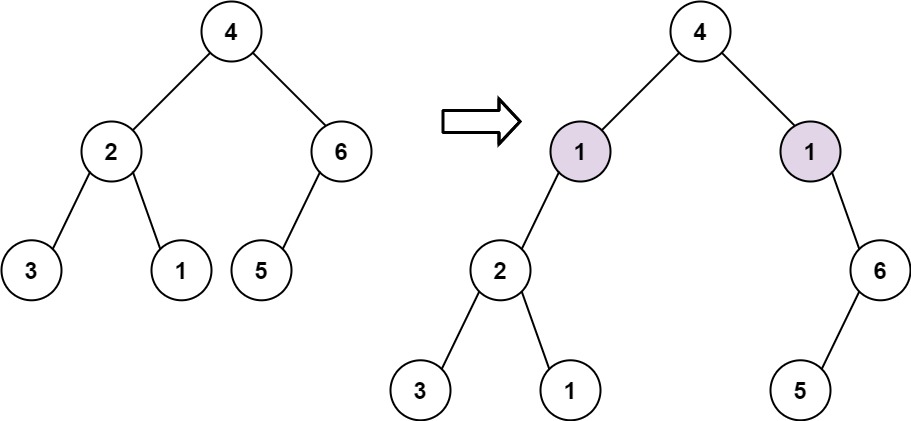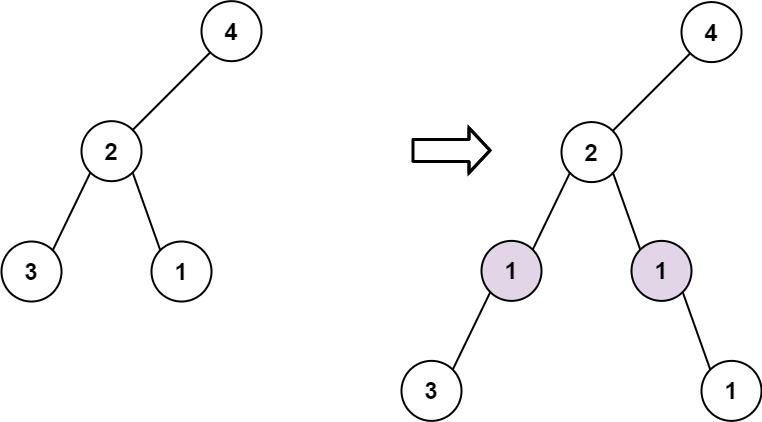Add One Row to Tree - Easy to understand DFS solution
Problem Statement:
Given the root of a binary tree and two integers val and depth, add a row of nodes with value val at the given depth depth.
Note that the root node is at depth 1.
The adding rule is:
- Given the integer
depth, for each not null tree nodecurat the depthdepth - 1, create two tree nodes with valuevalascur's left subtree root and right subtree root. cur's original left subtree should be the left subtree of the new left subtree root.cur's original right subtree should be the right subtree of the new right subtree root.- If
depth == 1that means there is no depthdepth - 1at all, then create a tree node with valuevalas the new root of the whole original tree, and the original tree is the new root's left subtree.
Example 1:

Input: root = [4,2,6,3,1,5], val = 1, depth = 2 Output: [4,1,1,2,null,null,6,3,1,5]
Example 2:

Input: root = [4,2,null,3,1], val = 1, depth = 3 Output: [4,2,null,1,1,3,null,null,1]
Constraints:
- The number of nodes in the tree is in the range
[1, 104]. - The depth of the tree is in the range
[1, 104]. -100 <= Node.val <= 100-105 <= val <= 1051 <= depth <= the depth of tree + 1
Solution:
This is a plain DFS problem. Logic in comments.
class Solution {
public:
void dfs(TreeNode *root, int val, int depth, int curDepth)
{
if (!root) return;
// We need to insert as per the rule at this point
if (depth==curDepth+1)
{
root->left = new TreeNode(val, root->left, NULL);
root->right = new TreeNode(val, NULL, root->right);
return;
}
dfs(root->left, val, depth, curDepth+1);
dfs(root->right, val, depth, curDepth+1);
}
TreeNode* addOneRow(TreeNode* root, int val, int depth)
{
// Special case when we have to insert at root
if (depth==1) return new TreeNode(val, root, NULL);
dfs(root, val, depth, 1);
return root;
}
};